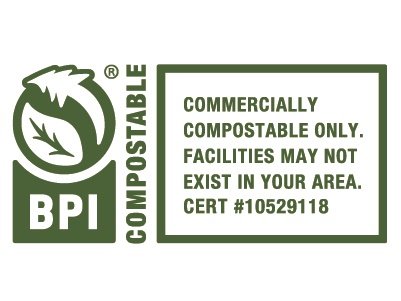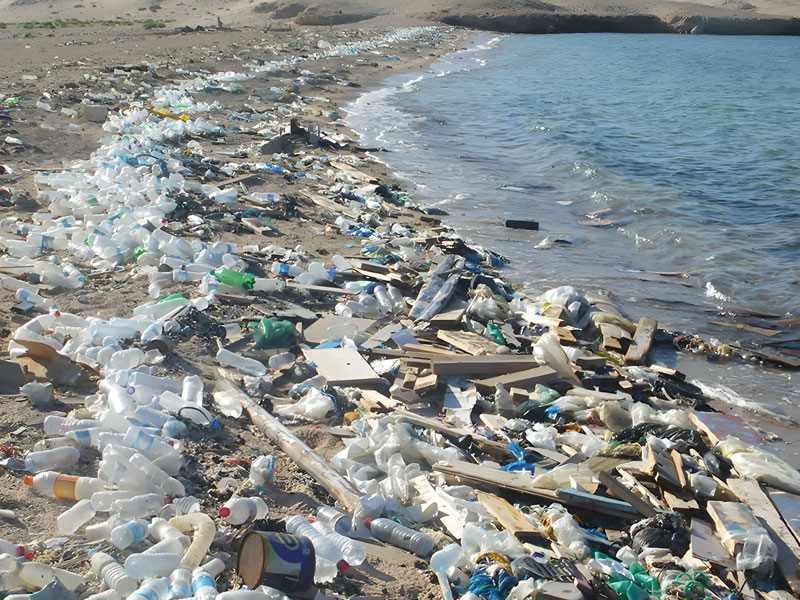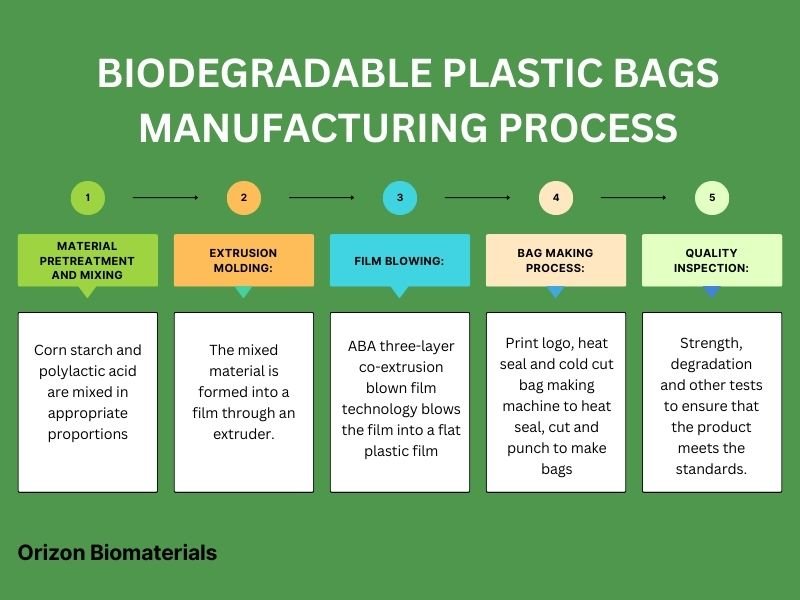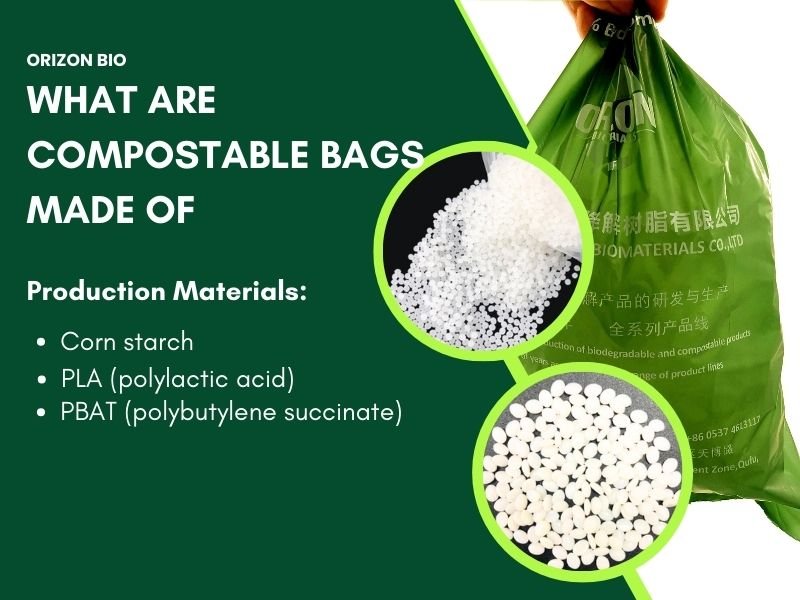Many customers, upon seeing biodegradable bags in the supermarket, often ask, “How long does it take for biodegradable plastic to decompose?” No manufacturer or brand can guarantee a specific number of days. Truly biodegradable plastics (including PLA and PHA) typically decompose within 90 to 180 days under industrial composting conditions. However, this requires certification by a professional authority. Under different disposal conditions, such as oceans, soil, or landfills, this process can take years or even longer. In particular, many people wonder, “How long does it take for biodegradable plastic to decompose?”
Because the raw materials and final disposal methods of compostable bags on the market vary greatly, as a biodegradable compostable bag manufacturer with 16 years of experience, we will take you to an in-depth understanding of the decomposition time of biodegradable bags, hoping to be of some help.
What Is Biodegradable Plastic?
Degradable plastics are decomposed by microorganisms in the natural environment, ultimately converting into water, carbon dioxide, and biomass. There are no specific requirements for the decomposition time or environment.
When it comes to biodegradable plastics, many people are confused by the terms biodegradable, degradable, and compostable. An online search reveals the following: degradable > biodegradable > compostable.
| Property | Degradable | Biodegradable | Compostable |
|---|---|---|---|
| Definition | Materials that break down into smaller molecules via physical, chemical, or biological processes. | Materials that decompose into natural substances (e.g., water, CO₂, biomass) via microbial action. | Materials that decompose in a composting environment into nutrient-rich compost, safe for soil use. |
| Scope | Broadest term, includes all types of degradation (e.g., photodegradation, thermal degradation, biodegradation). | Subset of degradable, limited to decomposition by biological processes. | Subset of biodegradable, specifically suited for composting with beneficial end products. |
| Conditions | May degrade under non-biological conditions (e.g., sunlight, heat). No specific environmental requirements. | Requires microorganisms, suitable temperature, humidity, and oxygen (e.g., soil or compost settings). | Requires specific composting conditions (e.g., industrial: 50-60°C; home: 20-30°C). Must meet standards like ASTM D6400 or EN 13432. |
| Limitations | Degradation products (e.g., microplastics) may not be eco-friendly. | Decomposition time varies; not all biodegradable materials are compostable. | Not all biodegradable materials are compostable; requires certification and proper facilities. |
| Examples | Photodegradable plastic bags, chemically degradable materials. | Certain bioplastics (e.g., PBAT), organic waste. | Certified PLA tableware, food scraps (for home/industrial composting). |
| Environmental Impact | May leave harmful residues (e.g., microplastics). | More eco-friendly, but depends on conditions and material. | Most eco-friendly, produces compost usable in agriculture/gardening. |
Notes:
- Practical Use: Choose materials based on their disposal infrastructure (e.g., home composting, industrial composting, or waste management). Always check if they are certified “compostable,” which is considered environmentally friendly.
Factors Affecting Biodegradable Plastic Decomposition Rate
- Temperature: High temperatures (55-75°C) in industrial composting accelerate microbial activity; home composting temperatures are difficult to control, and if they are below 35°C, decomposition will be slow.
- Humidity: Water is not required, but it should be kept within a certain range. Decomposition can be affected by excessive dryness or excessive humidity.
- Oxygen: Decomposition is faster in aerobic environments (such as composting) than in anaerobic environments (landfills). Prolonged anaerobic conditions can produce methane.
- Microbial Species: Microbial species vary significantly across different environments, for example, activity varies between beach sand, forest soil, and compost piles.
- Material Form and Thickness: Thinner fragments decompose faster.
- Additives and Coatings: Some biodegradable plastics have layers or additives added to increase their load-bearing capacity or toughness, which can also affect microorganisms.

What Are Some Biodegradable Raw Materials?
- PLA (Polylactic Acid)
Currently the most popular bioplastic on the market, it offers excellent thermal stability and solvent resistance. Common products such as transparent, “eco-friendly” cold drink cups and lunch boxes are mostly made of PLA. It is derived from renewable resources such as corn and sugarcane.
The molecular chain is designed to be stable, requiring sustained temperatures above 55°C and extremely high humidity for degradation. Only in these conditions can microorganisms efficiently break down its molecules, breaking down organic matter into water, carbon dioxide, and other nutrients that benefit the soil and contribute to the sustainable development of the Earth.
- PHA (Polyhydroxyalkanoate)
PHA is a rising star in bioplastics. Its unique molecular structure allows it to be synthesized by microorganisms under specific conditions as an energy storage substance.
It degrades rapidly in a variety of natural environments, including soil, freshwater, and even the ocean.
- Starch-based Plastics
This is a mixture of traditional plastics (such as polyethylene) with a large amount of starch. The so-called “degradation” process advertised by businesses is actually just microorganisms consuming the starch, causing the entire structure to disintegrate and ultimately break down into tiny fragments that are even more difficult to clean.
- Oxo-degradable plastic
This is not biodegradable plastic! Additives such as metal salts are added to traditional plastics to accelerate their physical breakdown under the action of light and oxygen. Microorganisms cannot break it down, but instead it turns into countless invisible microplastics, which pose a serious threat to soil, water supplies, and the food chain.
Any product labeled “oxo-degradable” or “degradable” should be considered a more serious environmental threat than regular plastic.
How Long Does It Take for Biodegradable Plastic to Decompose
Because the final disposal mode is different, industrial composting facilities, home compost bins, landfills (anoxic) or ocean/aquatic disposal, the following is a comparison of biodegradation times in different environments.
All compostable, oxo-biodegradable, conventional, and biodegradable plastics showed signs of breakdown after nine months of exposure to air. Only compostable plastics effectively decomposed under specific conditions, making them suitable for environmentally friendly disposal. The other three remained intact after three years in soil or seawater, demonstrating limited environmental relevance. (This study, based on a study by Imogen Napper and Richard Thompson of the University of Plymouth, examines how long plastics take to decompose.)
| Plastic Type | In Industrial Composting Facilities (Ideal Conditions: >55°C, High Humidity, Oxygen-Rich) | In Landfills (Real Conditions: Low Oxygen, Low Temperature, Compacted) | In Open Soil (Natural Environment) | In Ocean (Natural Environment) |
|---|---|---|---|---|
| Conventional Plastic (PET, PE) | Does not decompose | 500 – 1000+ years | 500 – 1000+ years | 450+ years |
| Oxo-degradable Plastic | Does not decompose, only fragments | Slowly fragments into microplastics (decades) | Quickly fragments into microplastics (months to years) | Quickly fragments into microplastics (months to years) |
| PLA (Polylactic Acid) | < 180 days | Barely degrades (estimated 100 – 1000 years) | Barely degrades | Barely degrades |
| PHA (Polyhydroxyalkanoates) | < 180 days | Slowly degrades (several years) | Degradable (6 months – 2 years) | Degradable (1.5 – 3 years) |
Biodegradable Plastics Break down in Landfills
- Methane release: PLA and PHA contain carbon, which, when decomposed in anaerobic environments, produces methane, which is 25 times more potent than CO₂. This release has serious environmental impacts and contributes to the climate crisis.
- Fragmentation without decomposition: Plastics undergo oxidative degradation, breaking down into microplastics that can easily enter soil and water systems.
- Incomplete degradation: Pollution cannot be fully degraded in landfills, potentially creating hidden hazards.
Does It Make Sense for Garbage to End up in a Landfill?
Yes, it does. This isn’t a technical issue; it’s a choice based on green environmental values. Because the investment costs of industrial composting facilities are relatively high, some places can’t afford them, so a lot of garbage ends up in landfills. On the surface, it might seem like bioplastic bags aren’t breaking down, but in the long run, this is an intangible investment in green, sustainable development.
Choosing bioplastics (such as PLA) reduces dependence on petroleum-based feedstock, and corn and sugarcane are renewable resources that can be grown annually.
Choosing recycled plastics can solve the current crisis. In the future, as technology advances, new methods of degradation may emerge, which may also be a good solution.
We should first properly manage plastic waste, giving discarded plastic bottles and packaging films a second life, rather than simply consuming new resources to make new things. We can contribute to solving the existing plastic waste problem.

What Do the Certification Logos Mean?
BPI / DIN CERTCO / OK compost INDUSTRIAL
Needs to be disposed of in an industrial waste bin. This type of waste must be sent to a dedicated industrial composting plant to decompose within 180 days. Otherwise, it’s just ordinary plastic.
OK compost HOME
Can be “home composted.” This requires a properly managed composting bin in your backyard at the correct temperature. It can decompose within a year. Do not discard it carelessly in your garden.
OK biodegradable SOIL / MARINE
“Truly nature-friendly” (very rare on the market). It can be degraded in soil or the ocean. This is truly sustainable.

Environmental Impacts of Bioplastics
Source: Bioplastics require the cultivation of large quantities of crops like corn and sugarcane, which consumes vast amounts of land, consumes significant amounts of water, and requires the use of fertilizers and pesticides.
Lack of Industrial Composting Equipment: Industrial composting facilities are expensive to invest in, making them unaffordable in most regions. This results in the inability of most biodegradable plastics to fully degrade.
“Greenwashing”: Excessive marketing of “biodegradable” products can create a false sense of security among consumers, ignoring environmental concerns.
FAQ
Do Biodegradable Plastics Break Down in Water?
Not that quickly. Many biodegradable plastics that require high temperatures (such as PLA) barely degrade in seawater and may float for decades.
Can PLA be processed in a home compost pile?
No. If the temperature in a home compost pile is poorly controlled and too low, it will not completely decompose for several years.
Will biodegradable plastic decompose if thrown in the trash?
No. Most municipal waste ends up in landfills, where it degrades very slowly.
Are biodegradable plastics more environmentally friendly?
Not necessarily. Their production process also uses resources and generates carbon emissions. If handled improperly, their environmental impact can be significantly reduced.
Is oxo-degradable plastic safe?
This is the most harmful to the environment and soil. It breaks down into smaller plastic particles (microplastics) and is not decomposed by microorganisms.
Do different countries treat biodegradable plastics the same?
Yes, industrial composting facilities are relatively expensive, making them prohibitively expensive for most countries. Without specialized equipment, the processing results vary.
Can biodegradable plastics be thrown into the recyclables?
No. They will contaminate other recyclables and affect the quality of the final recycling.
How can I tell if plastic can degrade naturally?
Look for the product’s certification label. If it says “OK compost” or “BPI,” it must be composted in an industrial composting facility.
Conclusion
How long does it take for biodegradable plastic to decompose? The answer is: there’s no standard answer, depending on the final disposal method. The specific decomposition time depends on the environment. If it’s not in the high-temperature, high-humidity environment of industrial composting, most biodegradable plastics will take a long time.
Related Artical:


